|
Yarrow (Achillea millefolium):
Yarrow is a versatile and widely used herb known for its medicinal properties, particularly in traditional healing practices. This perennial herb is native to Europe, Asia, and North America, and has a long history of use in folk medicine. Yarrow is recognized for its ability to support the immune system, reduce inflammation, and promote wound healing. It has a characteristic feathery, fern-like appearance and produces clusters of small, white or pink flowers that are often found growing in wild meadows, fields, and along roadsides.
Botanical Characteristics:
Yarrow grows as a bushy herb that typically reaches a height of 30–90 cm (12–36 inches). The plant has deeply divided, feathery leaves that are aromatic when crushed. Its flowers are small, typically white or pale pink, and arranged in flat-topped clusters known as "corymbs." Yarrow thrives in a variety of environments, including grasslands, meadows, and along riverbanks, preferring well-drained soil and full sun. The plant blooms in late spring to summer, and the flowering tops are harvested for medicinal use.
Health Benefits of Raw Yarrow:
Yarrow has numerous health benefits, especially related to its anti-inflammatory, antimicrobial, and wound-healing properties. Some of the key benefits of raw yarrow include:
Wound Healing and Skin Care:
Yarrow has been used for centuries to promote wound healing due to its astringent and antimicrobial properties.
When applied topically, yarrow can help stop bleeding, reduce inflammation, and promote faster healing of cuts, bruises, and abrasions. It is often used in poultices or salves for treating wounds.
Anti-inflammatory Effects:
Yarrow contains compounds that have anti-inflammatory effects, which help reduce swelling and discomfort.
It is often used in herbal medicine to treat conditions like arthritis, gout, and other inflammatory disorders, both internally and topically.
Digestive Health:
Yarrow has a long history of use in treating digestive issues.
It can help soothe an upset stomach, relieve indigestion, and reduce symptoms of irritable bowel syndrome (IBS). Yarrow can also stimulate appetite and improve digestion by promoting the flow of digestive juices.
Immune System Support:
Yarrow is known for its immune-boosting properties.
It can help reduce the duration and severity of colds and flu by stimulating the immune system and promoting perspiration, which helps the body expel toxins.
Relieves Menstrual Discomfort:
Yarrow is used in herbal medicine to support women's health, particularly for alleviating menstrual cramps and regulating the menstrual cycle.
Its mild uterine tonic properties can help ease discomfort during menstruation and reduce heavy bleeding.
Antioxidant and Antimicrobial Properties:
Yarrow contains powerful antioxidants that protect the body from oxidative stress and free radical damage, potentially lowering the risk of chronic diseases like heart disease and cancer.
It also has strong antimicrobial properties that make it effective for treating infections, especially skin infections and digestive tract infections.
Reduces Fever:
Yarrow has been traditionally used to reduce fever.
It works as a diaphoretic, which helps induce sweating and lower body temperature, making it useful in treating conditions like colds, flu, and other infections that cause fever.
Calms the Nervous System:
Yarrow has mild sedative properties that can help reduce stress, anxiety, and tension.
It is sometimes used in teas or tinctures to help calm the mind and promote relaxation.
Culinary and Medicinal Uses of Raw Yarrow:
Yarrow Tea: Fresh yarrow leaves and flowers can be used to make an herbal tea. The tea has a slightly bitter taste and is often consumed for its digestive and immune-boosting properties.
Tinctures and Extracts: Yarrow is commonly made into tinctures or liquid extracts, which are used for their medicinal effects on digestive health, immune support, and inflammation.
Topical Applications: The fresh leaves and flowers of yarrow can be applied directly to the skin to treat wounds, bruises, or skin irritations. Yarrow salves and oils are also available for external use.
Poultices and Compresses: For wound care or inflammation, yarrow leaves can be crushed and applied as a poultice or compress to the affected area.
Bath Soaks: Yarrow is sometimes added to bath soaks to ease muscle aches, skin irritations, or menstrual cramps.
Cultural and Historical Significance:
Yarrow has a rich history in traditional medicine and has been used for over 2,000 years. It was highly regarded in ancient Greece and Rome, where it was named after the Greek hero Achilles, who supposedly used it to treat the wounds of his soldiers. In medieval Europe, yarrow was considered a potent herb for healing wounds and was a common remedy in battlefields. Yarrow was also used in traditional Chinese medicine (TCM) and other indigenous practices as a treatment for various ailments, including digestive disorders and fevers.
Nutritional Composition of Raw Yarrow:
Vitamins: Rich in vitamin C, with smaller amounts of B-vitamins like folate, niacin, and riboflavin.
Minerals: Contains potassium, calcium, iron, and magnesium.
Bioactive Compounds: Flavonoids, alkaloids, tannins, sesquiterpene lactones, and essential oils.
Calories: Low-calorie, with approximately 50 calories per 100 grams of raw yarrow.
Environmental Role and Cultivation:
Yarrow is a hardy plant that thrives in a wide range of environments, from dry, rocky soils to moist meadows. It is easy to cultivate and is often found growing in wild fields and gardens. Yarrow is drought-tolerant and can grow in poor soils, making it an excellent addition to wildflower gardens or areas where other plants may struggle. The plant is also beneficial to pollinators, especially bees, which are attracted to its small, fragrant flowers.
|
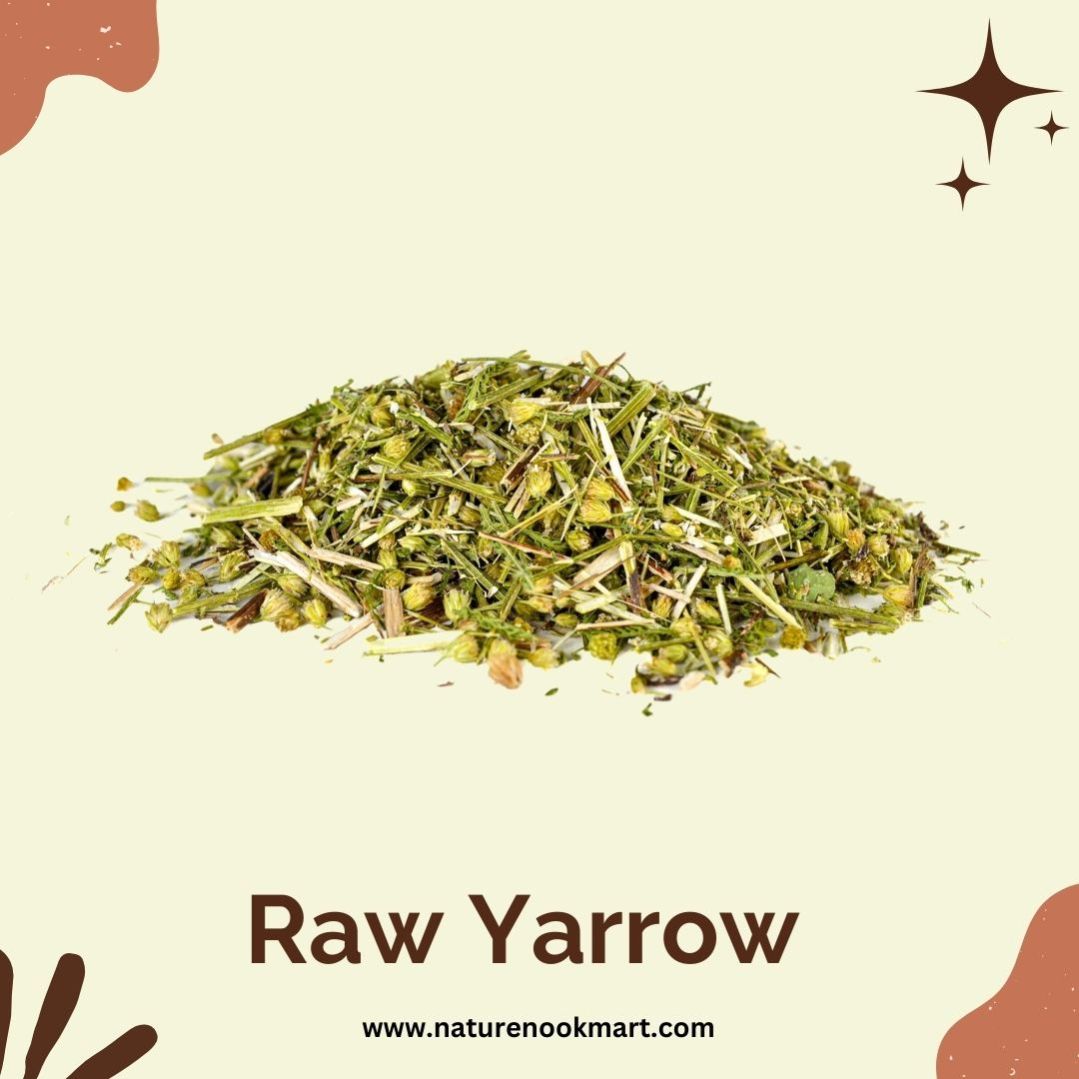
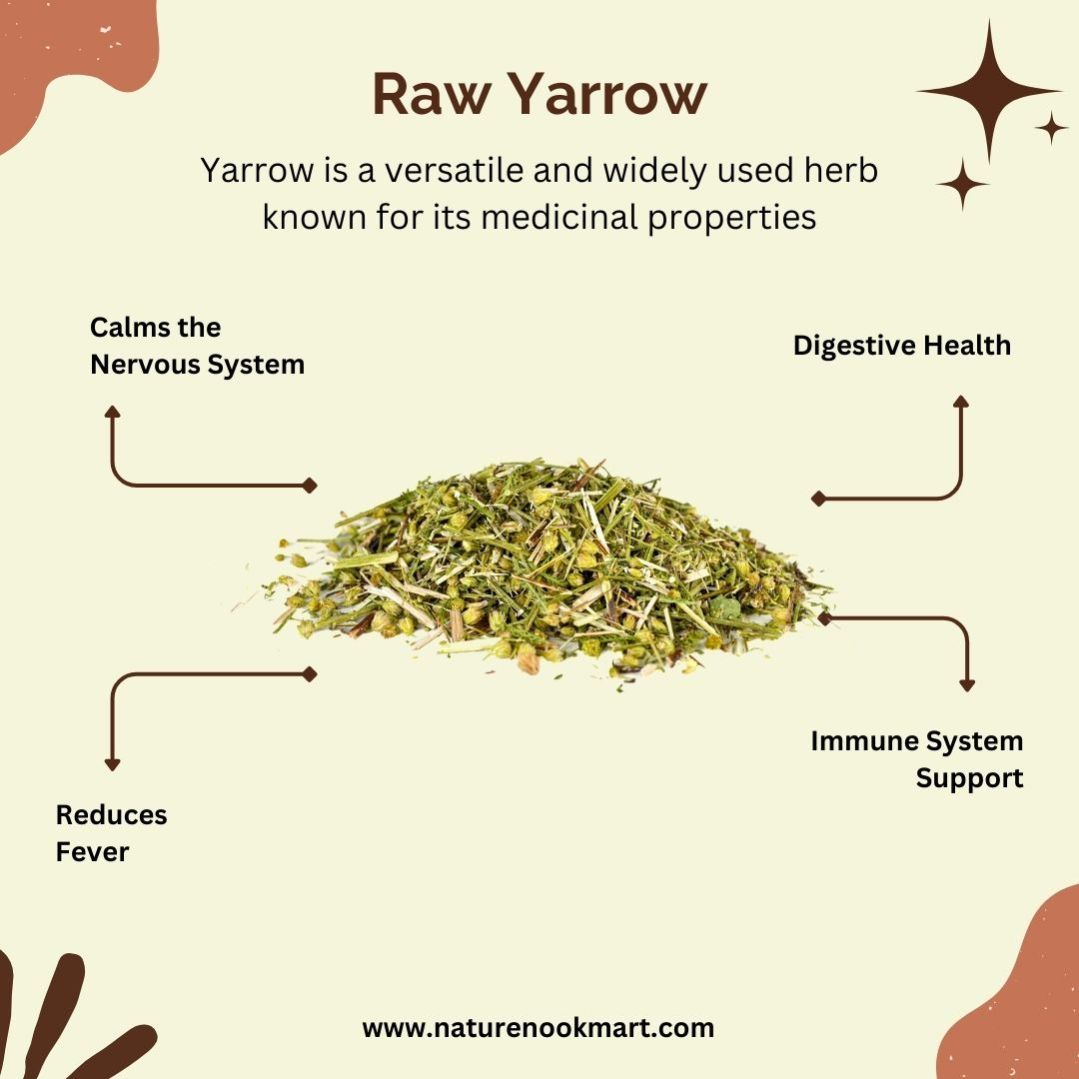

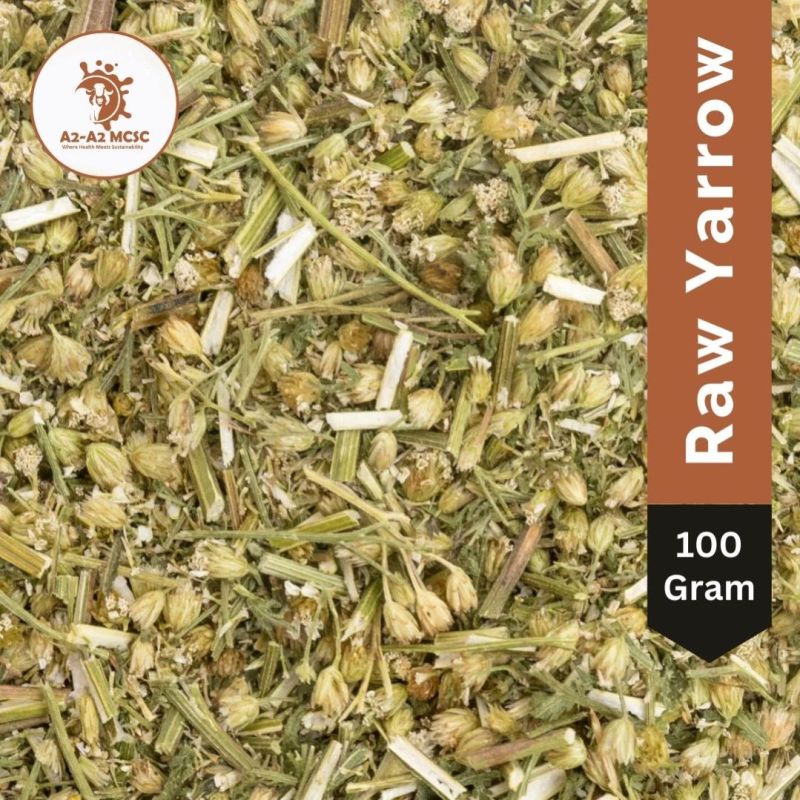
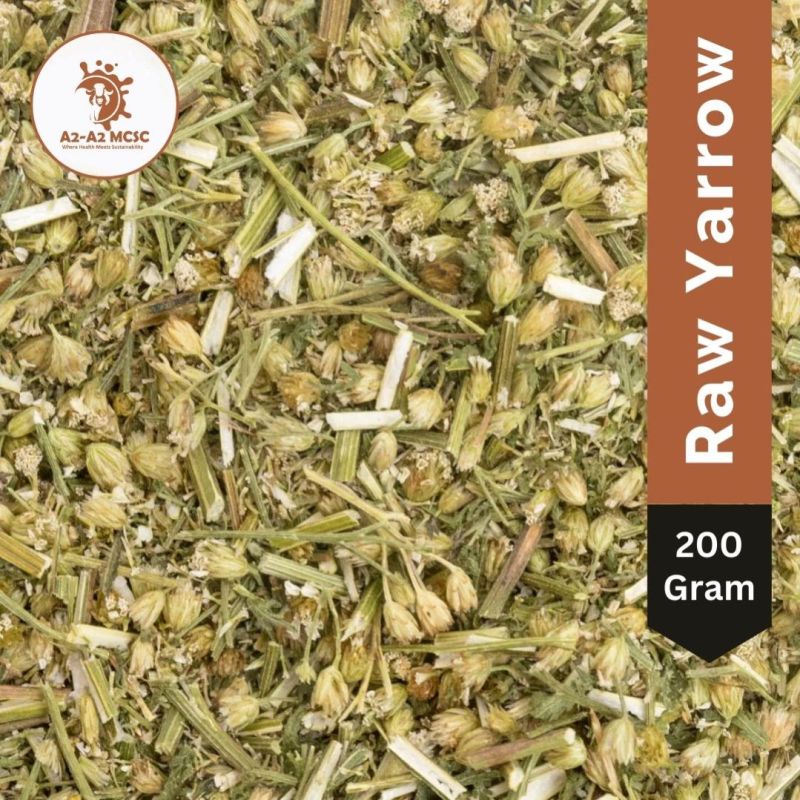
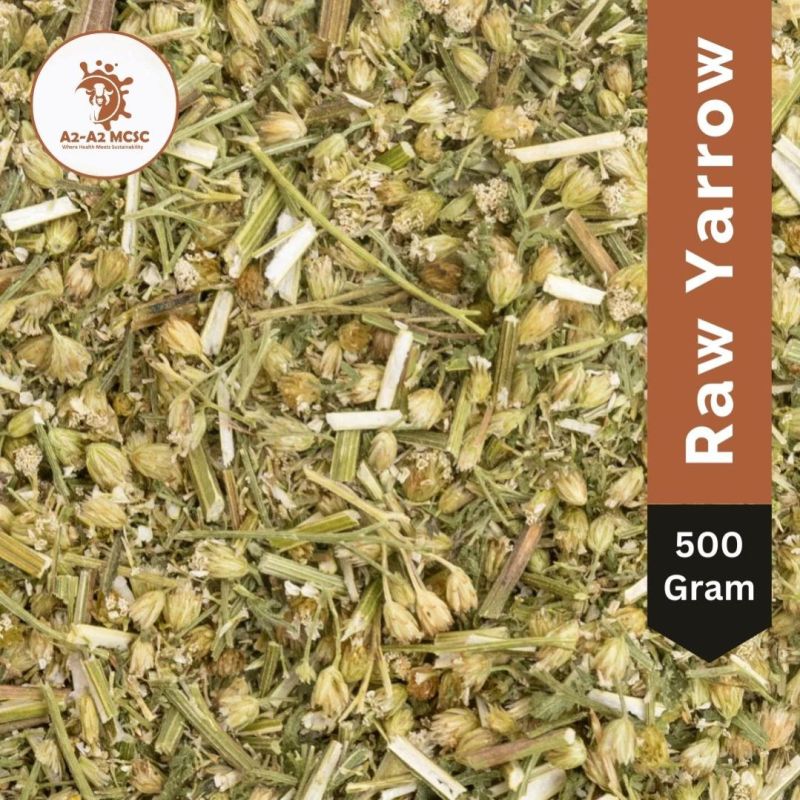






.jpg)
.png)
.jpg)
1.jpg)
2.jpg)
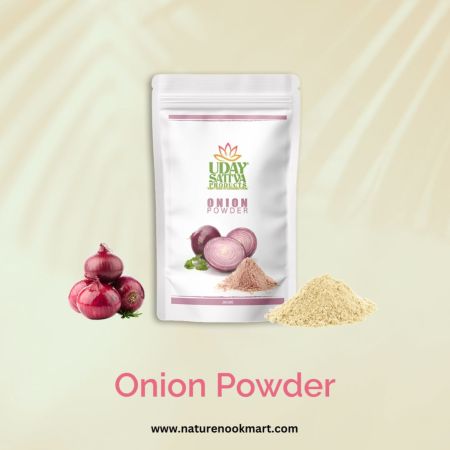
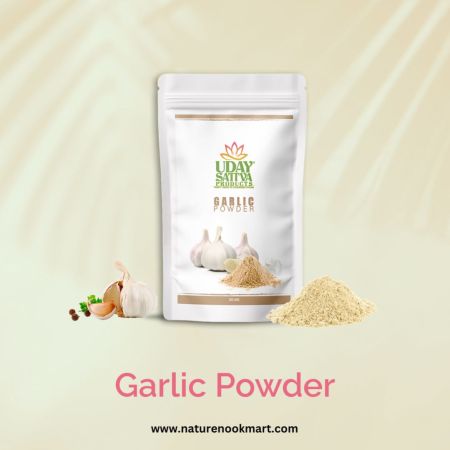
.jpg)
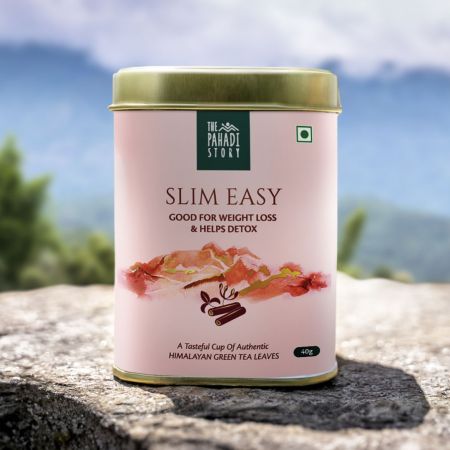

.jpg)




Yash Singh
2025-02-19 15:10:25Best raw Yarrow I’ve ever used—so fresh, effective, and perfect for supporting my health!